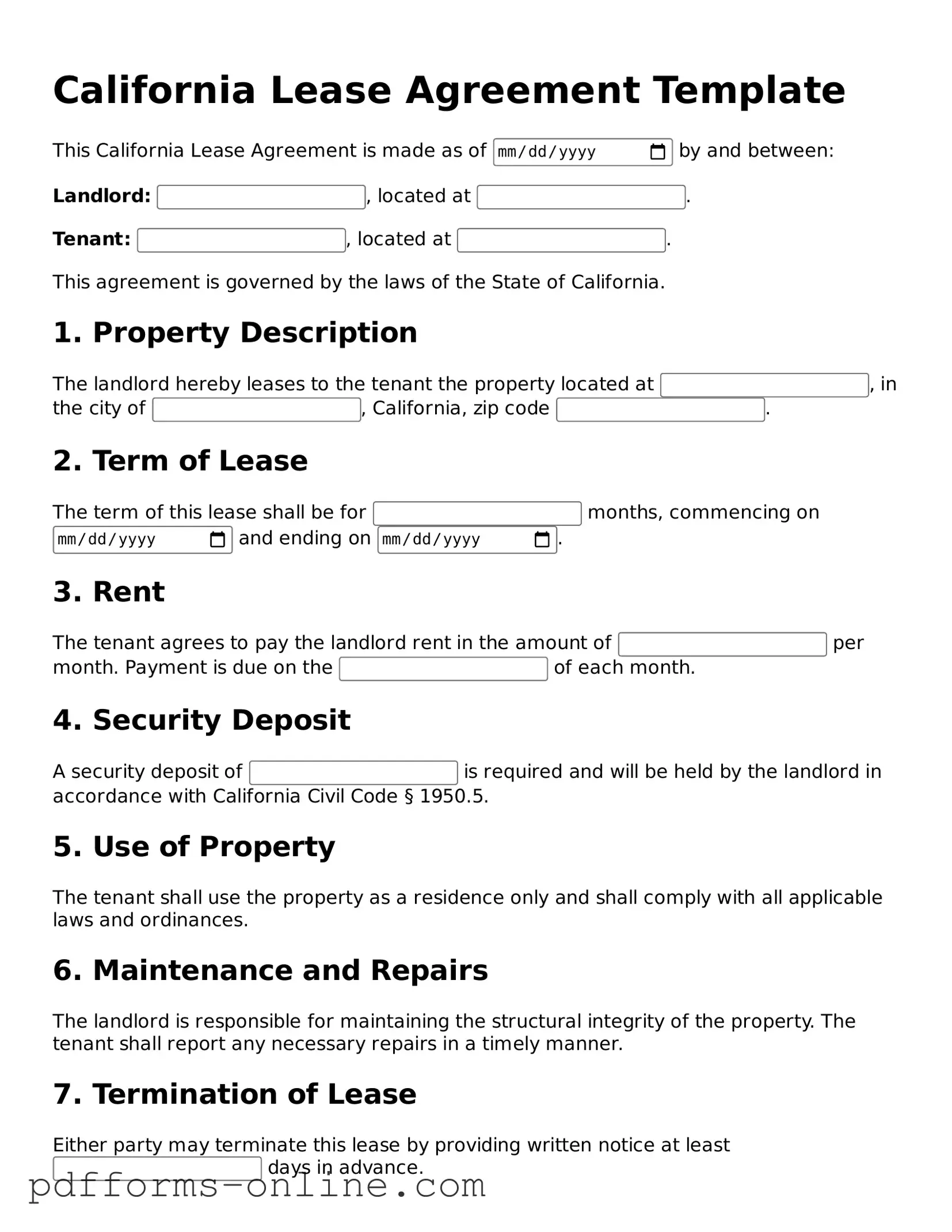The California Rental Agreement is closely related to the Lease Agreement. While both documents serve to outline the terms of renting a property, the Rental Agreement typically covers shorter time frames, often on a month-to-month basis. This flexibility allows landlords and tenants to adjust terms more frequently, making it suitable for those who may not want to commit to a long-term lease. Both documents include essential details such as rent amount, payment due dates, and responsibilities for maintenance, but the Rental Agreement may also include provisions for automatic renewal unless either party gives notice to terminate.
The Commercial Lease Agreement shares similarities with the California Lease Agreement in that both establish the terms under which a property can be occupied. However, a Commercial Lease is specifically designed for business purposes, covering aspects such as permitted uses of the space, zoning compliance, and provisions for modifications to the property. Like residential leases, it details rent, duration, and responsibilities for repairs, but it often includes clauses that address business-specific needs, such as leasehold improvements or options to renew.
A Roommate Agreement is another document that resembles the California Lease Agreement. This type of agreement is often used when multiple tenants share a rental unit. While it may not be a formal lease with the landlord, it outlines the responsibilities and rights of each roommate, including rent division, utilities, and house rules. Like a lease, it helps prevent misunderstandings by clearly defining each person's obligations, thereby fostering a cooperative living environment.
The Sublease Agreement is similar to the California Lease Agreement in that it allows a tenant to rent out their leased property to another party. This document must adhere to the original lease terms, meaning that the original tenant remains responsible to the landlord for the lease obligations. Both agreements outline rent, duration, and responsibilities, but a Sublease Agreement includes specific terms regarding the subtenant’s rights and obligations, ensuring that the original tenant maintains control over the property.
The Rental Application is another document that shares commonalities with the Lease Agreement. While it is not a binding contract like a lease, it serves as a preliminary step in the rental process. The application collects vital information from prospective tenants, such as employment history, credit checks, and references. This information helps landlords assess the suitability of applicants before entering into a formal lease agreement, ensuring that the final contract is made with responsible tenants.
The Eviction Notice is also related to the California Lease Agreement, though it serves a different purpose. This document is issued when a tenant violates the terms of the lease, such as failing to pay rent. It outlines the reason for the eviction and provides a timeline for the tenant to remedy the situation or vacate the property. Both documents are rooted in the lease relationship, but the Eviction Notice is a formal step in the process of terminating that relationship due to non-compliance with the lease terms.
Lastly, the Lease Addendum is akin to the California Lease Agreement as it modifies or adds to the original lease terms. This document can address specific issues that arise during the tenancy, such as pet policies or additional fees for amenities. It must be agreed upon by both parties and signed to be enforceable. Like the lease itself, an addendum ensures that all parties are clear about their rights and obligations, thus preventing future disputes.
